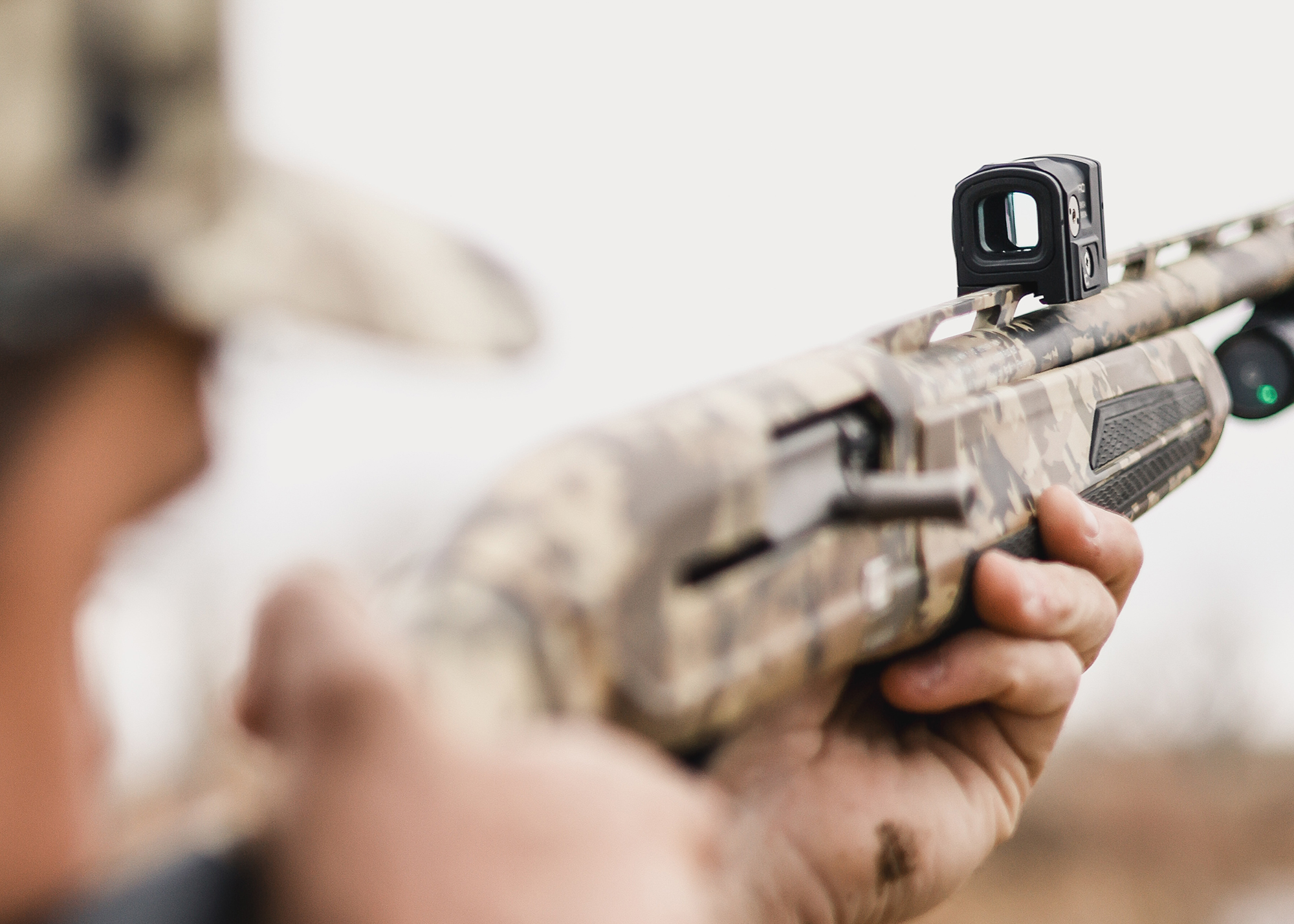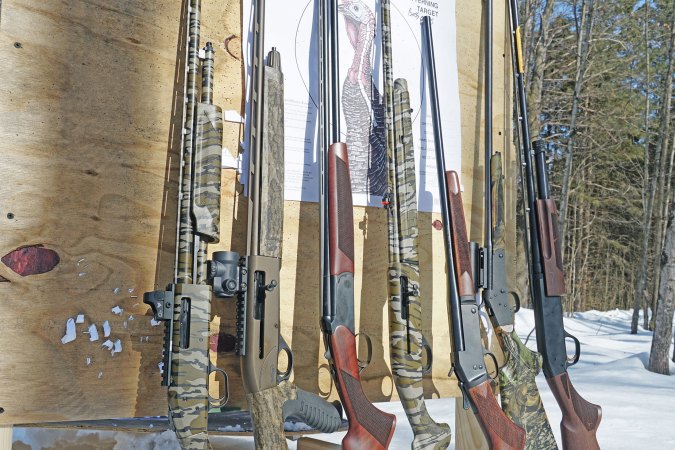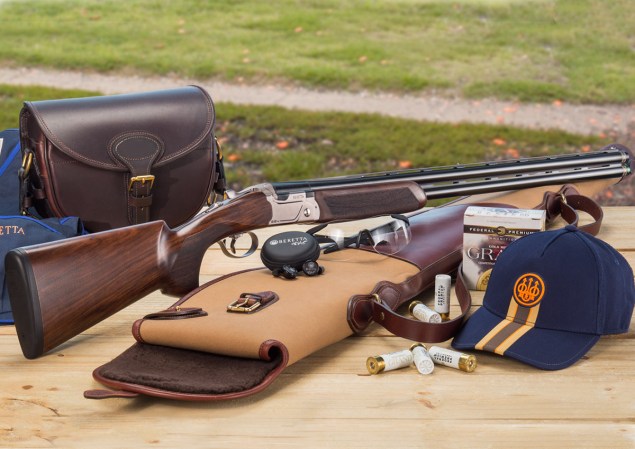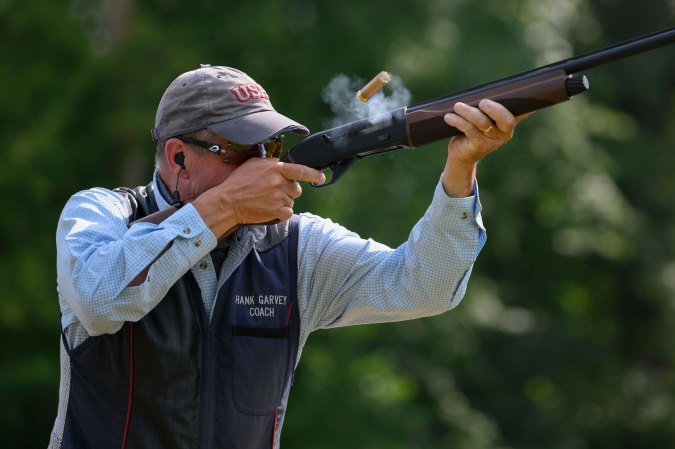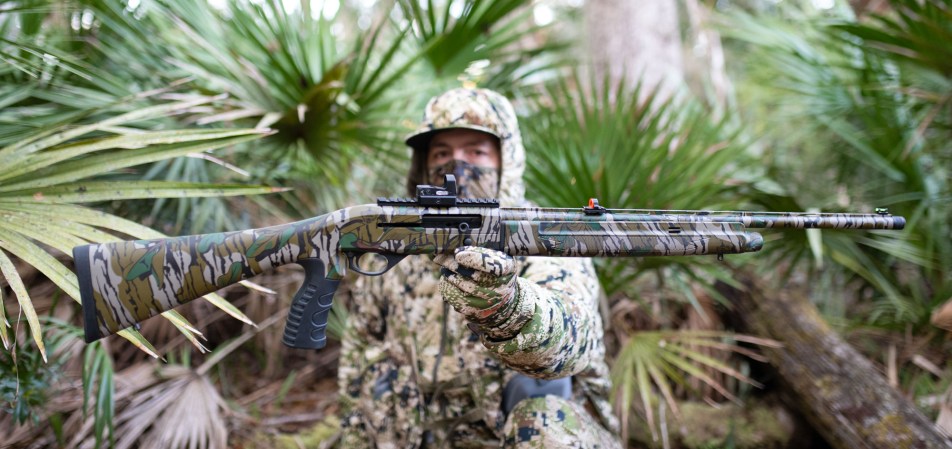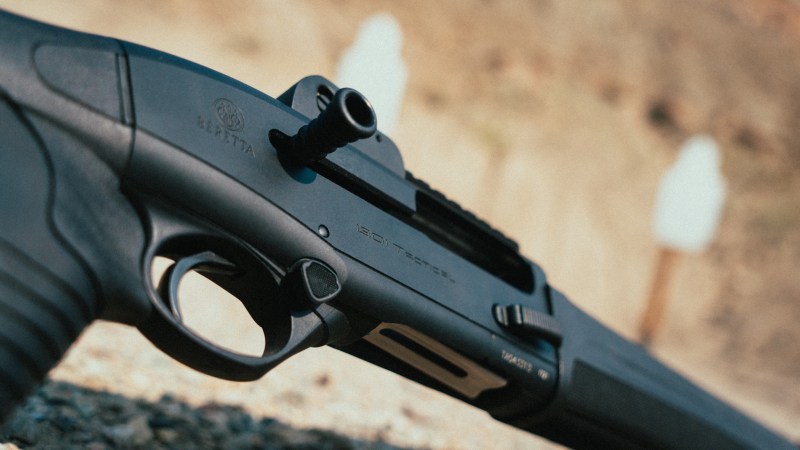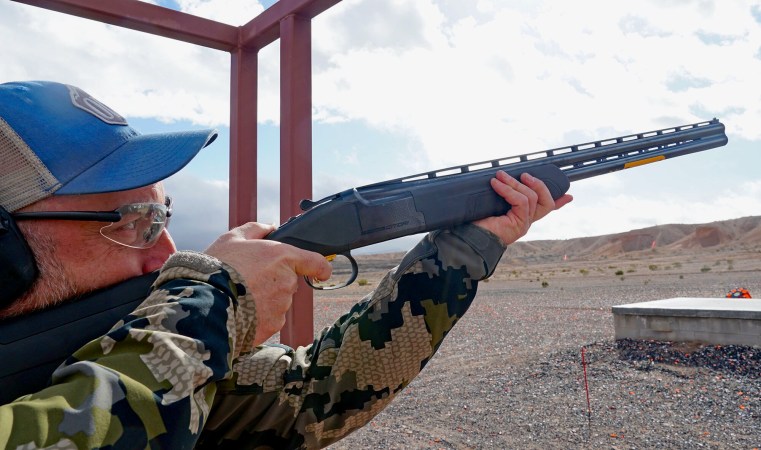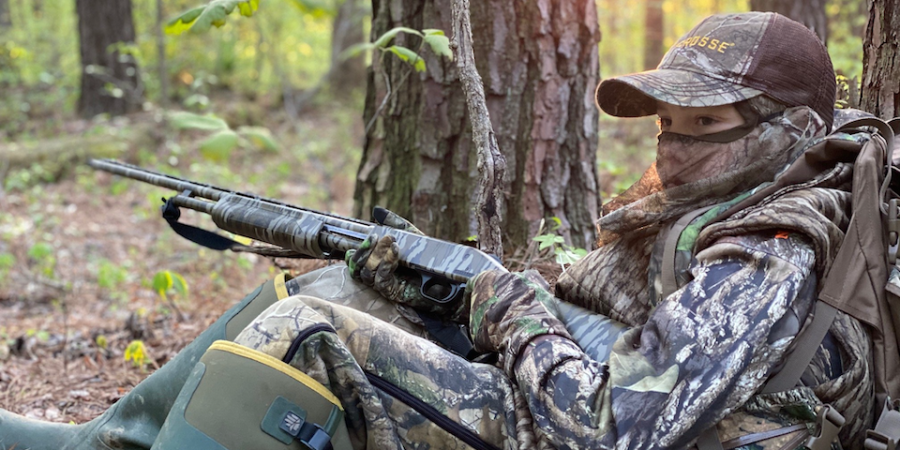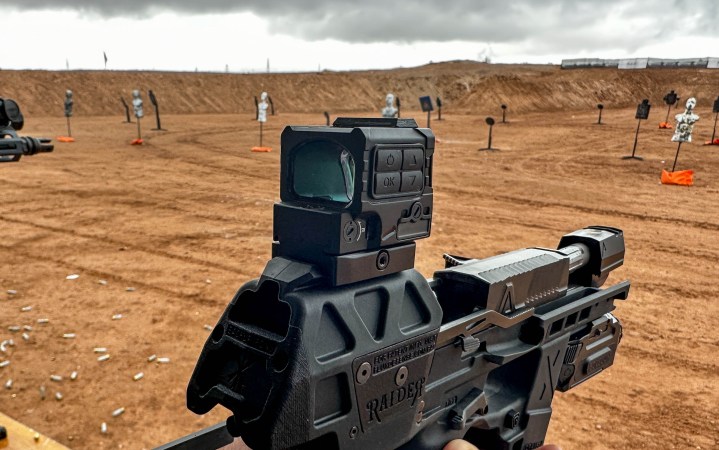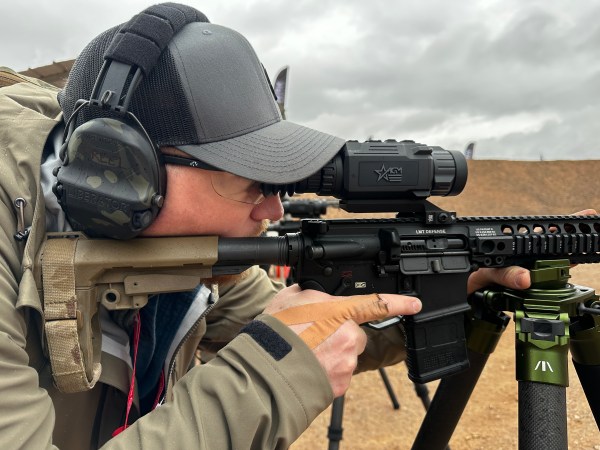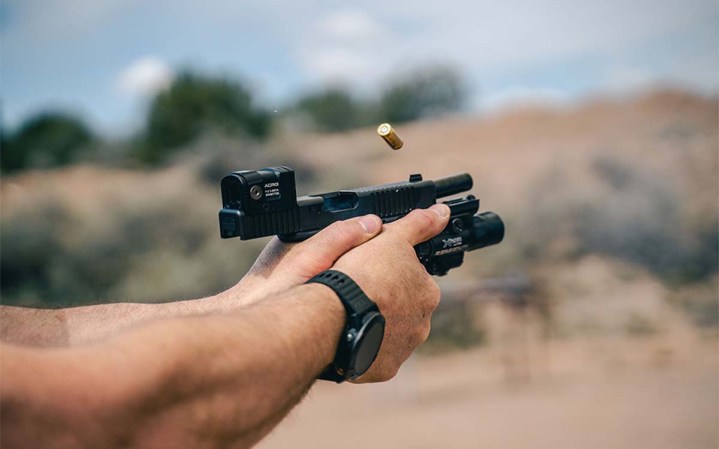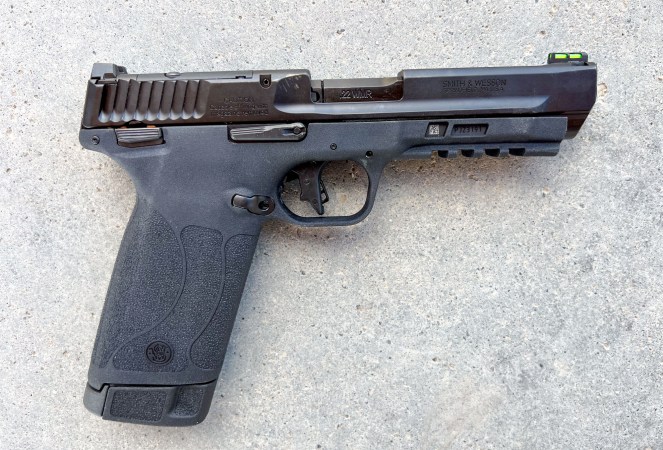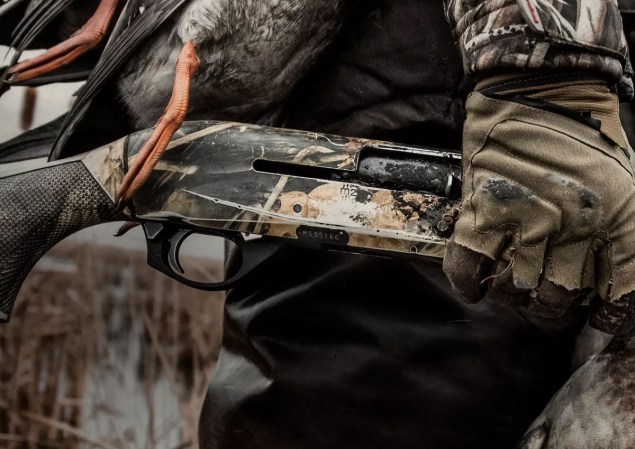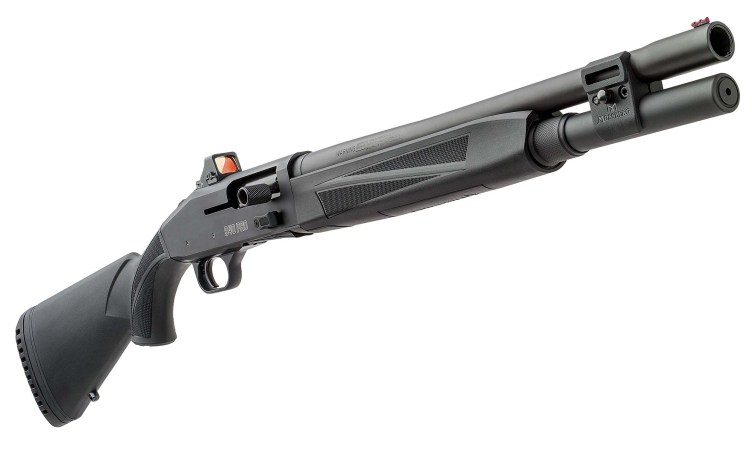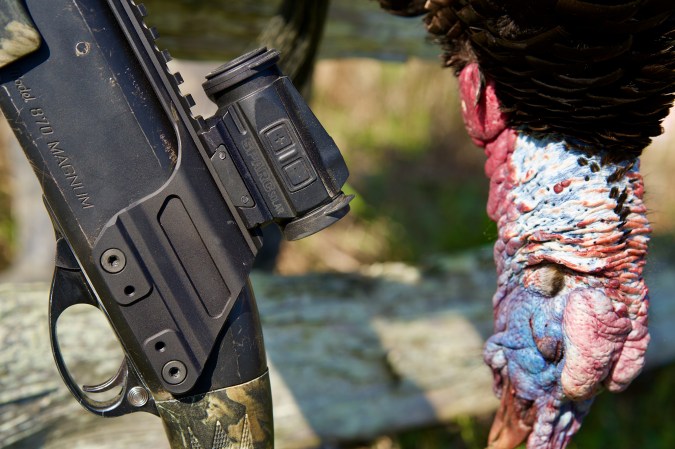We may earn revenue from the products available on this page and participate in affiliate programs. Learn More ›
Judging by the new shotguns of SHOT Show 2024, it’s clear that gun makers are anticipating an as-yet untapped horde of optic-buyers: duck and upland hunters. Several manufacturers have introduced dedicated waterfowl (and in some cases, upland) shotguns with receivers that are pre-cut to directly mount red-dots — no Pic rail needed. Both the Mossberg 940 JM Pro Waterfowl and Beretta’s first-ever snow goose gun, the Arctic Fox, are optic-ready. Meanwhile, Aimpoint unveiled its Acro S-2, a rib-mounted red dot designed specifically for clay and wingshooters.
Red-dots are old news for tactical shotgunners and turkey hunters. But wingshooters? I don’t have a single buddy who hunts pheasants or geese with one. So, are we seeing the crest of a wave that’s about to sweep the wingshooting world? Or is this just a ploy to move more product? As Field and Stream shotguns editor Phil Bouraily once told me about the rise of sub-gauges, “The cynical way to look at it is to say, ‘all the gun companies can do is sell more guns to the same people.’” The same could be said here.
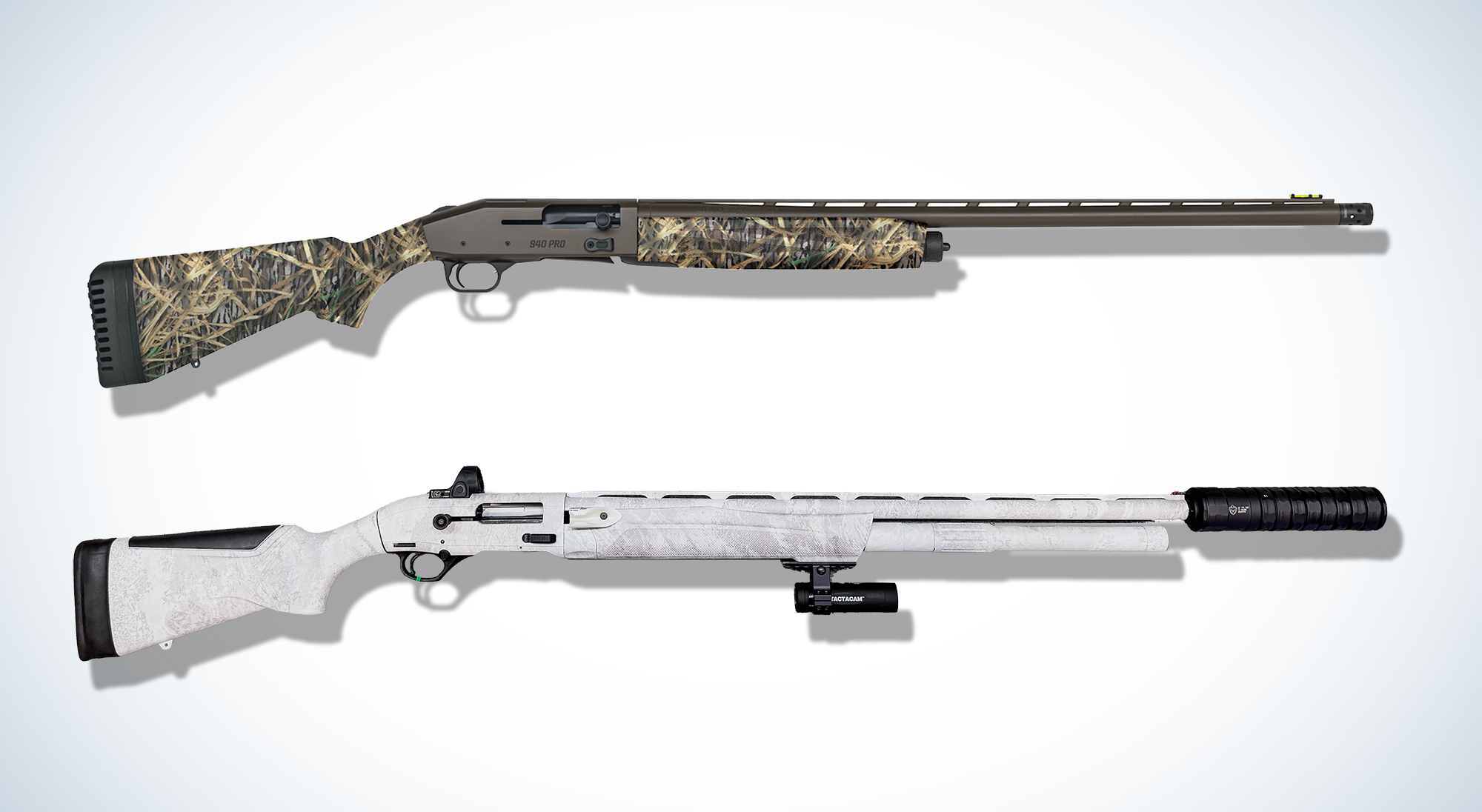
Photo by Natalie Krebs, and courtesy of Mossberg
But manufacturers insist this is the next logical iteration of shotgunning. Critics argue current red-dot technology isn’t ready for the real-world flying targets bird hunters and skeet shooters encounter. Meanwhile, some hunters are just plain curious. If every wingshooter’s goal is to kill more birds and reduce cripples, and if red-dots can help us do that … why wouldn’t we give them a chance?
The Red-Dot Trend
A little over two years ago, Mossberg filed a patent for an optic-cut receiver for red-dots. This technology is patent-pending, and first rolled out on the brand’s tactical shotguns.
“We were the first, so to say we’re a trendsetter is a given and we continue to expand on that. Red-dots make perfect sense on the tactical side where maybe you’re shooting buckshot or rifled slugs, and for turkey hunters — because they’ve embraced optics for a long time,” says Linda Powell, Mossberg’s director of media relations. “We are definitely seeing a trend [of red-dots on shotguns] and we’re pretty much expanding it across the line. Maybe not every model, but every dedicated series has at least an optic-ready gun. So in waterfowl, and in upland.”
Powell has two demographics in mind who are primed to embrace red-dot wingshooting: aging hunters, and young veterans.
“You have older hunters who have found they’ve already embraced red dots on their handguns and rifles, so it’s a natural progression for them to put it on their shotguns. I fit in that category,” says Powell. “It’s kind of eye-opening, once you put an optic on, the difference with it makes. I wear progressive glasses so it’s really difficult sometimes to align sights, or see a front bead. I think the other part that’s driving [this trend is] the younger demographic. If you think about people who have served in the military, probably all of the firearms they’ve used have had sights on them. So as they come home and get involved in the shooting sports and hunting, it’s only natural for them because they’ve already been trained and accustomed to using shotguns on optics as well.”
Mossberg’s dealers have been asking for optic-cut receivers, and in particular, they’ve been asking for combo packages of shotguns that come pre-mounted with a red-dot. Much of the resistance to red-dots could be the lack of knowledge around mounting and zeroing one, straightforward though it is. If an optic is something customers want, they love being able to purchase it prepackaged with a firearm, says Powell. The reverse may also be true: The more combo packages dealers begin to introduce, the more likely waterfowlers and bird hunters are to try an optic.
The Advantages of Red-Dots for Wingshooting
For Andrea Cerwinske, the vice president of marketing for Aimpoint Inc., there are clear upsides to mounting a red-dot like the Aimpoint’s Acro S-2 on her bird gun.
”There’s such grace to a shotgun when you’re shooting it. There’s lots of movement. Well, red-dots have the ability to help you see where your shot pattern is,” says Cerwinske, who grew up hunting pheasants in Iowa. “A red-dot also allows you to see lead, and muzzle movement. It also can help correct some cross-eye dominance issues.”
If you follow the red-dot trend in rifle and handguns, Cerwinske says, shotguns are simply the next platform for the red-dot revolution. To her, the right optic simplifies the marksmanship required to hit a moving target.
“We’ve been taught for many years that we don’t aim a shotgun. This is not aiming a shotgun,” says Cerwinske. “This is adding a reference point to help improve shooting and increase your target hits.”
Many shotgunners who have a knee-jerk reaction to the idea of a red-dot on their bird gun are probably imagining the bright red-dot sight on their turkey gun. Those dots are between 1 and 6 MOA; the Acro S-2 has a 9 MOA red dot, which means it’s anywhere from 1.5 to 9 times as large. To keep it from obscuring the target, Cerwinske keeps the brightness low.
“It is so subtle,” says Cerwinske of the dot. “You do not have to have it bright. It’s a subtle signal because you remain clay-focused, bird-focused, target-focused the whole way through. It just gives you a reference because you have both eyes open. You can see it, and you can see your lead. It’s pretty cool.”
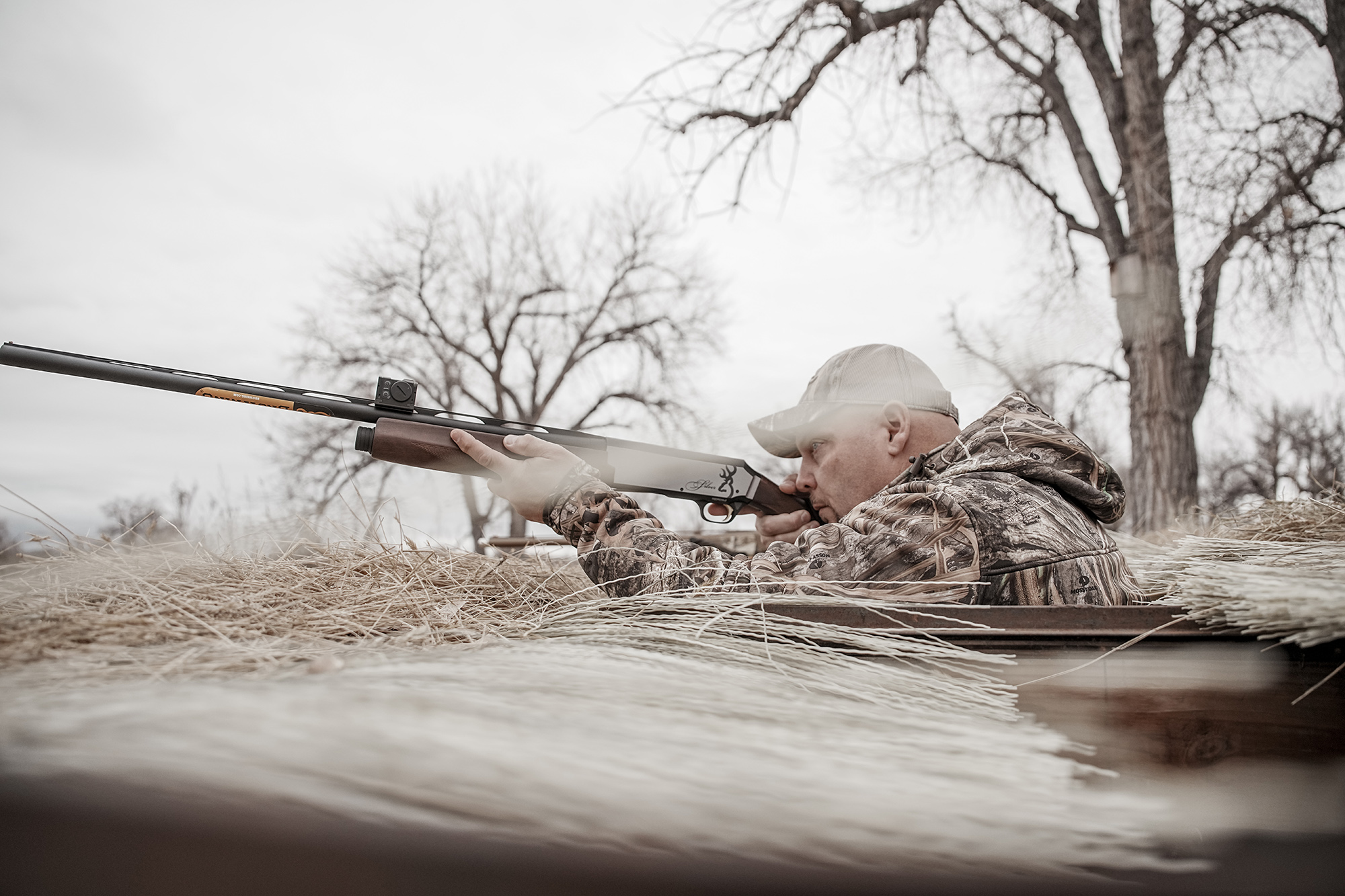
Photo courtesy of Aimpoint
To effectively hit flying targets with a rib-mounted red-dot, Aimpoint does not recommend a sustained lead. Instead, you should swing through the target.
“When you pull that shotgun up, your focus is on the target, and you’re bringing the dot to the target and pulling through. You’ll see the intersection of target and dot, and that’s when you pull the trigger,” explains Cerwinske. “This type of shooting mimics many of the hunting styles we use today with wingshooting. If you’re shooting ducks, quail, pheasants, whatever — [the red-dot] helps reinforce the acquiring the target, mounting the gun properly, and pulling through.”
While there’s a learning curve for any shooter switching from open sights to a red-dot, this switch is a relatively easy one to navigate with a little practice — at least on easier clay targets.
“We took it down to the National Sporting Clays Championship down in San Antonio. Those kids just went nuts [for it] and they were crushing the crap out of those clays. Of course, those guys are already at that higher competitive level. This optic is not going to take a AAA trap shooter and have them become [that much better]. But it will help diagnose errors in their swing, or in their muzzle speed,” says Cerwinske. “It can also help teach somebody who is new to the sport by trying to show the relationship to muzzle and target. And for those who, like myself, don’t get to go shooting all the time and need dusting off, it can help me get back into the swing of things a bit faster than the guesswork.”
The Acro S-2 housing is sleeker than its tube-shaped predecessor, the S-1, and sits lower on the gun for less change to your normal mount. Cerwinske prefers the rib-mount design to a receiver-mounted red-dot, and says Aimpoint has specifically designed the S-2 for target and wingshooters.
“So where we put our optic on there, it’s the lowest optical axis that you can find. If you put it too far back, people start to get a little more tunnel vision. You don’t use both eyes. You’re trying to put the target through the little aperture rather than looking at the full field. We like it a little farther out so you can still see the full trap field, you can still see as you’re walking through the cornfield.”
The Disadvantages of Red-Dots for Wingshooting
All that sounds great but the downsides to the S-2 are obvious. The sight is expensive ($755), there will be a learning curve, and you’ll add another piece of technology that can potentially fail in the field. Cerwinske carries a bore sight while hunting — just in case.
Meanwhile, Outdoor Life Shooting Editor John B. Snow is skeptical that red dots for wingshooting will catch on.
“People have tried at various times over the years to mount red-dots on shotguns for different pursuits with varying degrees of success,” says Snow. “For some applications, it’s definitely a potential benefit. Certainly in the realm of turkey hunting, tactical and defensive applications, and other shooting scenarios, like in competition where the difficulty of the moving target isn’t that great. Where I’m not convinced is that wingshooters and clay shooters are going to take to this, at least with the units we have currently available.”
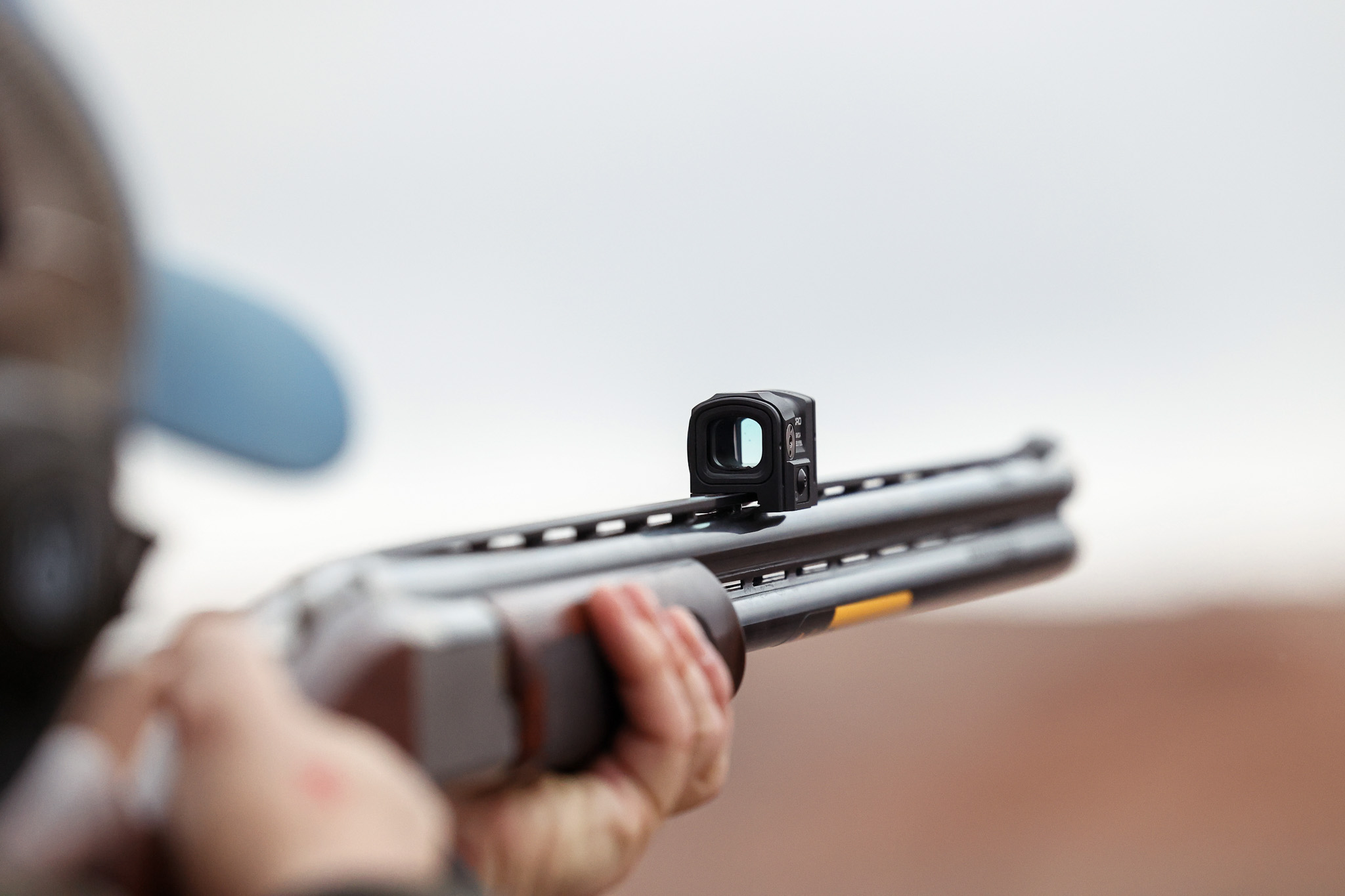
Photo by Natalie Krebs
And Snow is no stuffy gun writer who shies from technical advancements. The ideal red-dot sight for moving targets, he speculates, would be a housing-free reflex sight that simply projects the dot so it hovers above the shotgun. It would likely be more fragile, but such technology (which isn’t available to the consumer market) would better accomplish goals of visualizing lead and aiding cross-eye-dominant shooter — without restricting their field of view.
“So for example with that Aimpoint, I’m a big fan of that enclosed-emitter red-dot,” says Snow, who shot trap targets with the Acro S-2 last week at SHOT Show 2024. “But with the unit placed midway down the rib, I found it much more of an impediment than a benefit. The housing on the red-dot simply obscures too much of the sky for smooth and elegant use. It would be particularly ill-suited for a hunting scenario where you might have pairs of ducks flying, for example, and you need to stay tracking on a specific bird. And having your vision obscured by that sight could lead to making a bad shot under that dynamic condition.”
If you have good shotgun fundamentals and a gun that fits properly, Snow argues, you don’t need the red-dot. In fact, some hunters and shooters do better once they remove the bead from their muzzle, Snow points out, “so the idea that adding more sight somehow fixes the issue is a little counterintuitive.”
He’s somewhat bullish on receiver-mounted optics for their placement and lower profile, but his immediate reaction to wingshooting a red-dot? It simply sucked the joy out of smashing clays.
Read Next: The Best Shotguns of 2023
I only had time to shoot a couple clays with the S-2, and my first reaction was similar to Snow’s: The red-dot seemed to remove the instinctiveness and, yes, joy from breaking clays. But it takes more than just a few shells to get the hang of a red-dot, and maybe a little more time with it would change my mind. Because the one thing that brings me the most joy while hunting is killing birds over my dog. And if a red-dot helps me do that more consistently, then I’m not one to quibble.

